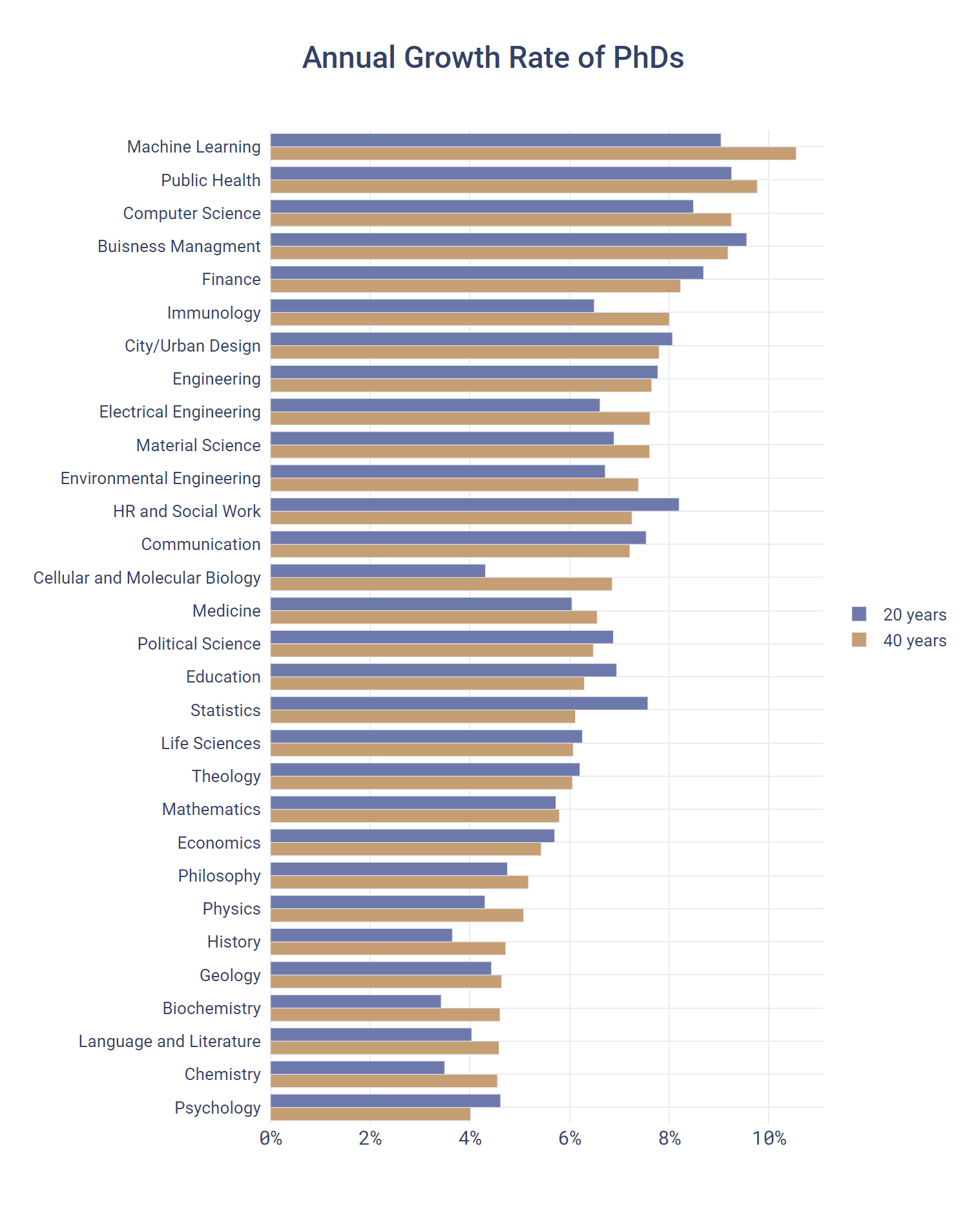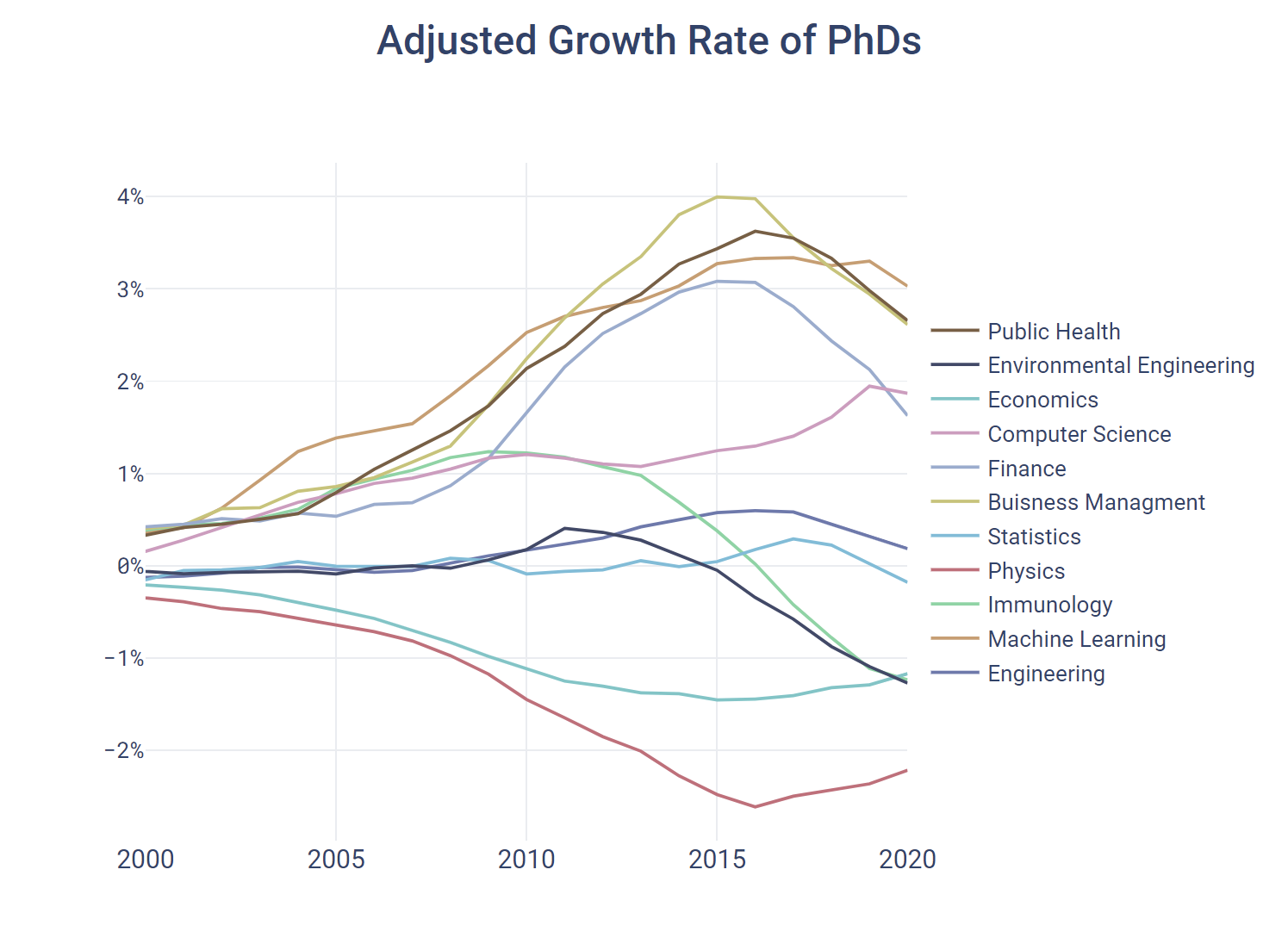Which PhD Fields Are Growing The Fastest?
Increased interest in certain fields can lead to future industry growth

Doctoral degrees hold the promise of increased earnings, interesting research opportunities, and part/full time teaching positions. Some fields of PhD study have a long and storied history, like Chemistry and Physics, whereas other fields are new and rapidly growing, such as Machine Learning and Computer Science.
One question we set out to answer was how PhD fields have changed over time, and if there are general patterns we can identify to predict changes in PhD field growth? We find this interesting not just from a theoretical perspective, but also for a practical reason -- an indicator of industry advancement is academic interest, meaning that PhD study might act as a strong proxy for future industry growth.
With this in mind, we've used Revelio Labs workforce data to show the average year-over-year growth rate of a wide selection of PhD fields over the past 40 and 20 years:


Machine Learning is at the top of the list, alongside a handful of younger PhD fields. But of particular interest is the increased growth rate of fields like Political Science, HR and Social work, and Statistics over the past 20 years, where advances in technology have reinvigorated previously stagnant PhD fields.
Sign up for our newsletter
Our weekly data driven newsletter provides in-depth analysis of workforce trends and news, delivered straight to your inbox!
To further understand the trends of PhD field growth over the most recent 20 years, we examined a time series of the adjusted annual growth rate -- that is, the growth rate with respect to all PhD growth rates -- for some select PhD fields.


The first obvious trend is that the 2008 financial crisis acted as an inflection point for many fields. While PhD growth in Business Management and Finance was higher than average in the years prior to 2008, the financial crisis coincided with an even more rapid increase in those fields. This trend has only recently dropped off, notably in 2016.
Just as interesting are the PhD fields where growth has remained almost constant over the past 20 years; Statistics and Engineering. This long term stability could be indicative of resistance to external trends, and based on these specific PhDs, is suggestive that applied fields with numerous job opportunities are sheltered against large fluctuations.
Takeaways:
- Degrees in Machine Learning have gained considerable ground over the past several years, experiencing significant growth coinciding with renewed interest in neural networks and machine learning tools.
- Overall, pure Immunology PhDs experienced the greatest downturn in recent years, despite having strong growth preceding 2010.
- The number of students in Finance PhD programs experienced a notable spike after the 2008 financial crisis, perhaps as a result of renewed interest in prevention or explanation of economic downturns.
If you have any ideas of other metrics to track or would like to hear more about Revelio Labs and its workforce data, please feel free to reach out.


